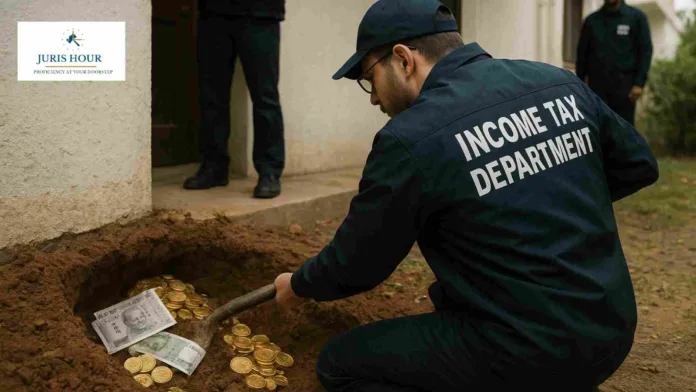The Income Tax Department in India has quietly built a powerful technology system to catch people who keep large amounts of undisclosed cash and gold at home. From advanced data tracking to on-ground gadgets, officials now rely less on guesswork and more on evidence.
Data first, raids later
The backbone of this effort is Project Insight — a high-tech platform that collects information from banks, credit card companies, property registries, mutual funds and more. All this data is compiled in the Annual Information Statement (AIS), which shows details like:
- Large cash deposits in bank accounts
- Expensive credit card payments
- Property purchases above ₹30 lakh
- Gold and jewellery investments
If these transactions don’t match what a person reports in their tax return, the system raises a red flag. This is often the first step before a raid.
Tools used during searches
When the Income Tax Department conducts a raid, it’s no longer just about checking cupboards and lockers. Officers now carry a range of specialized tools and machines that make the search faster, more accurate and harder to escape.
- Geo-surveillance tools
- In some big cases, officials have used advanced geo-radar and scanning devices that can detect irregularities under the ground or walls.
- These tools help identify valuables like jewellery, cash bundles or documents hidden in underground vaults, false flooring or even buried in soil.
- For example, during a massive raid in Odisha, such technology was used to uncover jewellery concealed below the surface.
- Metal detectors and gold analyzers
- Handheld metal detectors allow officers to quickly scan rooms, beds, furniture and luggage for hidden gold or silver.
- Once jewellery is found, it is checked using XRF (X-ray fluorescence) gold analyzers, which instantly show the purity and weight of the metal without damaging it.
- This ensures that seized jewellery is properly valued and recorded on the spot.
- Digital forensic kits
- In today’s world, evidence is often hidden in phones, laptops, hard drives or pen drives instead of paper files.
- Officers use forensic kits with write-blockers (to prevent tampering) and software that makes a mirror image of the device.
- These kits can recover deleted files, hidden ledgers, secret accounts, WhatsApp chats and emails that reveal financial dealings.
- All copies are “hash verified” to ensure the data is legally admissible in court.
- Currency-counting machines
- In raids where crores of rupees in cash are seized, manually counting notes is impossible.
- Multiple high-speed currency-counting machines are brought in, often with bank staff, to log denominations and serial numbers.
- This avoids errors and ensures transparent documentation of the seized money.
After the raid
Once valuables are seized, the details are fed back into the department’s data system. This helps in tracing the source of money and issuing penalties if the income is unexplained.
Why this matters
Keeping cash or gold at home is not illegal. But if the amount is unusually high and not supported by declared income, it can trigger action. With AI-driven data checks and field gadgets, the taxman’s reach has become sharper than ever.
Read More: CBDT Raises Exemption Limit for Undisclosed Foreign Assets

